Continuing from Qumran Not a Sectarian Community #1 . . . .
Industrial activities
There was no lack of raw materials suitable for industrial uses in the region and we even have evidence for production of commercial resources but scholars have generally tended to downplay such activities as being only minor side-pursuits of otherwise occupied scribes. We pick up from the previous post by noting the kinds of industrial activities that one might reasonably have expected to see at Qumran as an integral extension of the Jericho royal estate and subsequently under Herod.
Keep in mind what such a list would mean for any scribe or monastic sectarian wanting to lodge there.
Leather and parchment
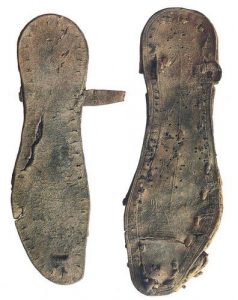
Qumran would have helped meet the high demand for leather sandals and aprons generated by the “intensive building programme of the Hasmoneans and, in particular, Herod.” Winter saw flocks brought into the area where aged animals and surplus male lambs and kids would have been slaughtered for their skins.
The production of leather was a malodorous and fly-ridden process. Not only was there the blood from the butchered beasts but the hair was removed from the hides by being soaked in dung and urine. The mid-second century CE author Artemidorus, a native of Ephesus, wrote:
‘The tannery is an irritant to everyone. Since the tanner has to handle animal corpses, he has to live far out of town, and the vile odour points him out even when hiding… The vultures are companion to the potters and the tanners since they live far from towns and the latter handle dead bodies’ (Interpretation of Dreams I: 54; 2:20).
In the Mishnah it was written that both pottery kilns and tanneries should be at least 50 cubits from a town (Baba Bathra 1:10, 2:9); Qumran was considerably further than that from the Palaces of Jericho! Although the tanner was viewed negatively because his handling of dead animals, and the use of urine and dung in the preparation of hides, would cause him to be ritually unclean (Jeremias 1969: 301-12), nevertheless his products, from water skins to sandals and phylacteries, were in demand and the specialist preparation of parchment on which sacred texts could be written was regarded as an honourable profession. (pp. 53-4)
Early archaeologists conducted scientific tests on at nearby Eini Feshka for the possibility of a tanning operation for the production of parchment but apparently with negative results. No-one bothered with similar tests at Qumran, however, because . . . .
Analyses looking for residues from tanning were carried out at Ein Feshka but not at Qumran itself because, it was assumed, ‘the community would have been too strict to permit’ tanning there (Poole and Reed 1972: 151– 152; de Vaux 1973: 78-82). (p. 71)
Firm belief that a scribal sectarian community occupied Qumran has blinded scholars to the evidence, according to Stacey:
Although Poole and Reed contended that ‘in neither of the two “industrial” quarters has a tannery been recognised’, they accepted that ‘many of the constituent rooms have pits, vats or cobbled floors (suggesting that wet work was carried out there)’. They recognized that water was a ‘valuable commodity’, but concluded that it could not ‘have been spared for tanning purposes’ and that ‘the community would have been too strict to permit’ (Poole and Reed 1972: 151 –2) tanning, a conclusion clearly reached not by scientific investigation, as they only did tests in Ein Feshka, but by accepting the prevailing theory of a permanent sectarian community. Perhaps they should have stuck to their scientific guns and concluded that the limited water supply and the nature of the tanning process meant that it was unlikely that any ‘sectarian community’ ever lived at the site, and insisted that analyses were carried out on sediments at Qumran. (p. 54)
Glue
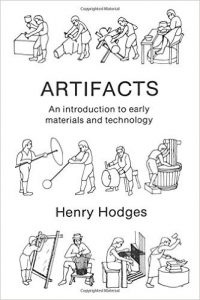 Remnants of bones and offcuts of hides that had been boiled are evidence of glue and/or gelatin manufacture.
Remnants of bones and offcuts of hides that had been boiled are evidence of glue and/or gelatin manufacture.
This is a large stride removed from those who have interpreted them as remnants of sacrificial meals. Some no doubt were remains of meals, but Stacey refers to Henry Hodges’ book on early technologies to support the
strong probability that many were remnants not of meals79 but of glue or gelatin making, a smelly process which turned the otherwise wasted by-products of animal slaughter into a valuable commodity. During excavations at En Boqeq, an oasis at the south-western end of the Dead Sea, ‘animal fat residues were found in our chemical analysis of soil samples taken from floors and the vicinity of ovens’ (Fischer, Gihon and Tal, 2000: 100). This fat was assumed to derive from animal bones and helped identify the site as a centre for the production of medicinal and aromatic unguents. Unfortunately such tests were not carried out at Qumran. (p. 55)
Wool preparation
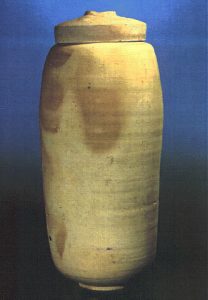 A pair of shears found at Qumran points to shearing there. Wool needed to be treated to remove its lanolin or natural oils and a very old and common material used for this scouring has been old (broken down) urine. Several jars at Qumran appear not to be used for drinking water (no dippers found with them) and their short necks and wide mouths were ideal for the collection of urine.
A pair of shears found at Qumran points to shearing there. Wool needed to be treated to remove its lanolin or natural oils and a very old and common material used for this scouring has been old (broken down) urine. Several jars at Qumran appear not to be used for drinking water (no dippers found with them) and their short necks and wide mouths were ideal for the collection of urine.
Dyeing
Of significance for the view that Qumran was a scholarly retreat:
Most dyeing processes produced strong, offensive smells. (p. 57)
Dyeing works (along with tanning processes) as a rule were based well away from urban areas.
Urine (recall the pots in the section above) was also needed as a mordant to fasten dyes to the wool. Dye pots need to be kept on the boil, and what was possibly a large bronze vessel over a furnace would have been ideal for dying.
Sources of vegetable and other dyes nearby:
- red dye from:
- madder
- henna
- sumach
- blue dye from:
- woad
- black dye
- bitumen floating on the Dead Sea
- royal purple
- murex shells from the Mediterranean coast — shells have been found at Herod’s palace in Jericho
Materials used for dyeing were also useful for producing other types of commodities:
Locally available plants and minerals would have been utilized for the extraction of tannins, perfumes and medicines.
- Henna, for example, could be used for both tanning and dyeing but also had anti-fungal properties;
- date palms are an important food source but also have tannic and many traditional medicinal properties, while ropes can be made from palm-frond fibres;
- sumac has both tannic and dyeing properties and could be added as a spice to food.
- The acacia tree could produce tannins, perfumes, an astringent medicine, and gum-arabic (which was used as a paint or ink base).
- Honey from bees that have fed on its flowers is considered a delicacy.
- Moreover, acacia is thought to be the source of ‘shittim’ wood used for the construction of the Ark of the Covenant (Exodus 25: 10; 30: 1).
- A black dye could be produced from bitumen, but it was also, according to Josephus, an ingredient in many medicines (War 4: 481).
(p. 57)
Pottery
Dried dung would have been a major source of fuel. There was also an abundance of fire-wood from bushes much more prolific in the past than today.
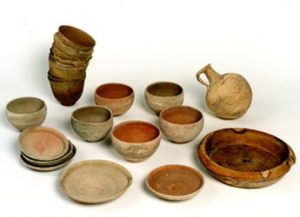
Potters would have made a year’s supply of pottery for the local market in just a month or two before leaving to escape the summer heat.
Certain pottery remains have been interpreted through cultic assumptions. Magness, for example, believes the pottery was produced locally at Qumran to avoid ritual contamination, and this motive explains the very plain and uniform character of all the cups, bowls and plates. Stacey, on the other hand, is reminded of his experiences in India where cups were produced en masse for single use only:
The many different religions, castes, and sub-castes of India, the members of which would regard any sharing of vessels with castes not their own as defiling, meant that it was expedient to discard these cups, after a single use, in large heaps besides the tracks. It seemed that the Jericho vessels had accumulated for some similar reason. (p. 64)
Medicines and perfumes
As we saw above there were many medicinal and aromatic plants in the vicinity of Qumran. Stacey cites several works addressing these in depth but singles out two for special mention:
- mallow — its leaves and flowers used for fomentations and poultices
- second-grade balsam — was produced at Qumran using trimmings from Ein Gedi either by boat or by pack animals. Balsam being a royal monopoly the final sale would have been in Jericho.
Rope making
Shipping on the Dead Sea called for considerable quantities of rope and palm fibre rope has been found attached to “Roman” anchor near Ein Gedi.
Flax retting
The linen “scroll wrappers” in Cave 1 were a local product. Flax was produced in abundance at Jericho but needed to be treated to by threshing and soaking. The calcareous water of Jericho was not at all suitable for the process. As with dyeing process it is necessary to use the fresh soft rain water such as was stored at Qumran.
Basketry and mat making
Stacey has a quite extensive discussion of these processes. I refer interested readers to the original article.
Other seasonal activities
Possibilities include:
- collection of bitumen and salt
- lye production from local plants
- date wine
- grinding mill, perhaps for production of beer
.
The Work: busy, seasonal, male dominated
Many terracotta balls, unfired, with varying numbers of holes in them, have been found at Qumran, some near a coin dated 10 CE. These balls
may well have been tallies given out as acknowledgement for work done, similar to, but far simpler than, ostraca (c.f. Cross 2007). The frequency with which they were found indicates a busy workforce. (p. 61)
Of the above industries there is positive evidence for pottery making and tanning (and less certainly for rope). Many are deduced from a combination of the local products and the needs of nearby Jericho and its royal monopolies. All require ample water supply, and some especially require soft rain water. And most of the above industries would have come alive at Qumran in the winter months following the rains.
All of the industries stank, or were “malodorous” as Stacey more delicately writes. Many would have produced smoke and smuts.
In such an environment, seasonal, unpleasant, few women would have been present. There is no need to postulate celibacy ideals as the reason for the gender imbalance.
.
No place for a Ben Sira

It follows that Qumran was not the place for the refined intellectuals seeking a quiet and inspiring place for meditation and learning:
As the industrial processes of Qumran were malodorous, it is unlikely that any scrolls were composed or copied in the polluted atmosphere where the slaughter of animals and the use of dung and urine in processing their by-products would have rendered all present ritually impure. Writing scrolls was painstaking, skilled work and scribes would have required the best possible conditions in which to work to minimise mistakes. As members of an educated elite, it is unlikely that any would choose to move to Qumran for the short period that fresh water was available to work in the unpleasant atmosphere created by the industrial processes carried out there. Apart from the problems with ritual pollution associated with animal slaughter, the stench, the smoke, and the smuts which were unavoidable consequences of the processes, together with the swarms of flies and mosquitoes attracted by them, would not have been conducive to undisturbed concentration on writing. (p. 63)
.
Not a closed settlement
What is certain is that Qumran was not a closed settlement with little contact with the outside world. A flaw made by almost all previous scholars is the assumption that any time that Qumran was occupied it was by a permanent year-round population, which encourages the tendency to see the site as having a single over riding function, either, for example, as a ‘monastery’, a villa rustica (Donceel-Voûte 1994), a fortified manor house (Hirschfeld 2004b), the villa of an agricultural estate (Humbert 1994), or a customs post (Cansdale 1997).
Although it served as a watchtower it was scarcely a strongly defended fortress (Golb 1995). Hasmonean Qumran could not have been permanently inhabited; rather the site was in an ecologically marginal area which would have been exploited seasonally, following winter rains, for various functions under the impetus of the nearby Royal Estate. Because the work was seasonal there would have been little incentive to build permanent dwellings and indeed there are no signs of any purpose-built living quarters in Hasmonean Qumran. (p. 62)
.
Scriptorium or tannery?
On the basis of inkwells and “writing benches” found in this room, archaeologists have suggested that the second story room of this building was the place where scrolls were copied.
No scrolls were found in this room or in the ruins of the site itself. But the same type of unique pottery was found both on site and in the caves with the scrolls, helping to connect the two.
Or. . . .
De Vaux identified two of the new rooms using monastic terms, unfortunate anachronisms as Christian monasticism did not begin to develop before the fourth century CE. . . . An upper floor above L30 became a ‘scriptorium’ similar to ‘rooms in monasteries of the Middle Ages'(!) (de Vaux 1973: 30) , on the grounds that some plastered mud-brick structures were identified as tables on which scrolls were written, and the discovery of two inkwells. The mud-brick structures were reconstructed on wooden frames in the Rockefeller Museum to look like a modern picnic table. The reconstruction (de Vaux 1973: Pl XXIa) was inaccurate; the ‘table and bench as exhibited bear no true relation to the original structures’ (Clark 1963: 63). Moreover it was quickly pointed out that ancient scribes did not sit at tables but sat cross-legged on the floor resting their writing tablet on their knees (Metzger 1958-59). Several sculptures from Egypt show seated scribes cross-leged dating back as far as 2,500 BCE (e.g. ‘The Seated Scribe’ in the Louvre) and that posture remained typical for scribes in the east until at least the 17th century CE (‘The Bearded Scribe’ Isfahan, dated 1626, Canby 2009: 199). The ancient leather specialists, Poole and Read, suggested that the tables were used for the final preparation of parchment (Poole and Read 1961: 115). They may even have been used as trestles to support skins during the de-hairing process, a messy process most likely carried out in the open air. It is, however, far more probable that they were used during one of the several industrial processes suggested for Qumran than for the writing of documents.110
Since the unearthing of the two inkwells, one of bronze and one of clay, several more pottery inkwells have been found (e.g. Magen and Peleg 2007: Pl 5.5) but this is not surprising as at least one (found at Ein Feshka) was ‘locally made at Qumran’ (Gunneweg and Balla 2003: 13). As ink wells were made in the Qumran kilns it is not surprising that several would be found near by. De Vaux, of course, saw the inkwells as proof that the scrolls were written here. However it is wrong to equate signs of literacy with the writing of religious scrolls rather than with normal administrative work. It is true that inkwells are unusual finds on excavations but it would be dangerous to assume that the lack of inkwells found in the Royal Palaces at Jericho, Herodium, or from Masada, was evidence for the illiteracy of the courts of the High Priests/King. More recently at least five inkwells have been found at a site, dated between the two Jewish Revolts, at Shu’afat, north of Jerusalem (Sklar-Parnes 2005),111 but it would be foolish to suggest that they were proof that scrolls were written there. (p. 66)
.
After Herod
I skip over Stacey’s discussion of further developments under Herod and the fate of Qumran’s infrastructure after Herod’s death and the changing regional security situation. (I have also bypassed his discussion of the depositing of the scrolls in surrounding caves.)
Stacey’s paper, addressing as it does the way much of the data has been interpreted through presumptions of an Essene or similar sectarian community, and the problem of some very unscientific workflows and processes in the early days of excavation, and how bias has led to interpretations that overlook and set aside key data, — all of this keeps reminding me of René Salm’s investigations into the history of archaeological work on the Nazareth site.
But we know facts alone rarely change opinions, and I liked one of Stacey’s concluding remarks:
Fundamentally people will continue to accept an interpretation of the site that best satisfies their own psyche, although I hope that they will take into account my redating of its development. . . .
My intimate knowledge of the regional archaeology tells me that Qumran, for a large part of its active life, could not have supported year-round occupation, and it satisfies my psyche to view Qumran as a predominantly seasonal site, producing, by processes that were unpleasant, articles that were necessary; a place bustling with activity for a few weeks in the year, but, during the harsh heat of summer, lying empty and abandoned to the thirsty, desiccating sun. (pp. 71, 73)
From Getty Images:
If you enjoyed this post, please consider donating to Vridar. Thanks!

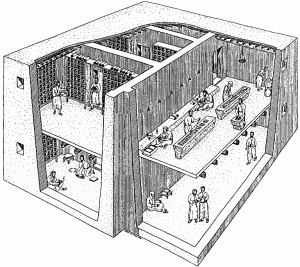
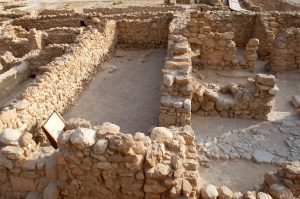
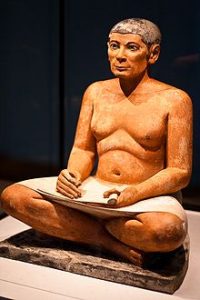
3 thoughts on “Qumran Not a Sectarian Community – #2”